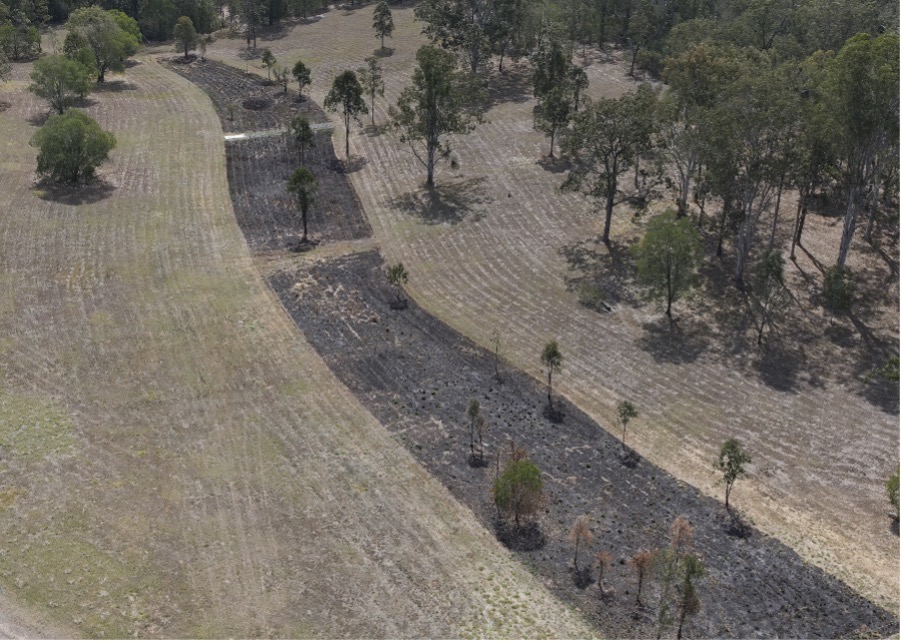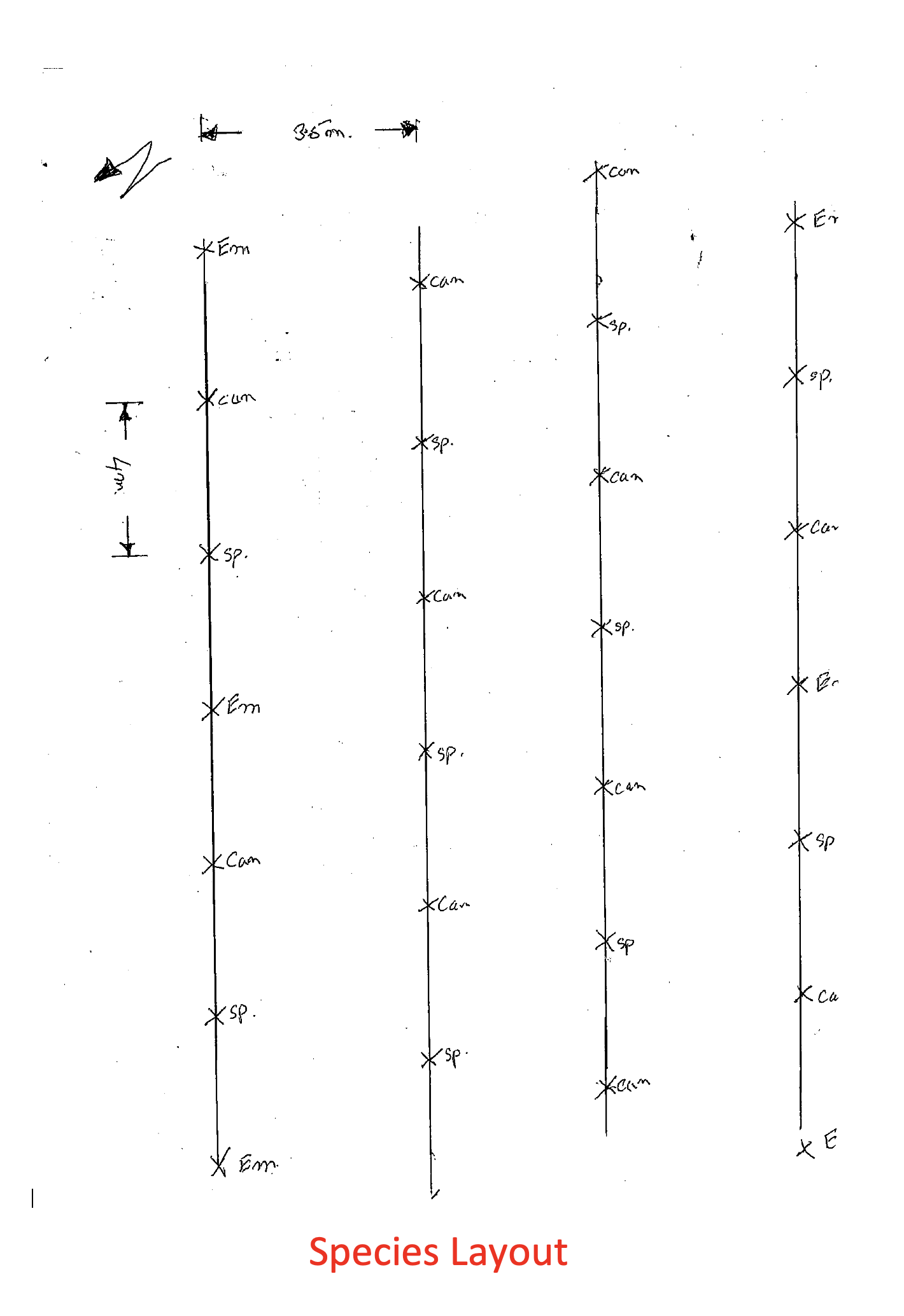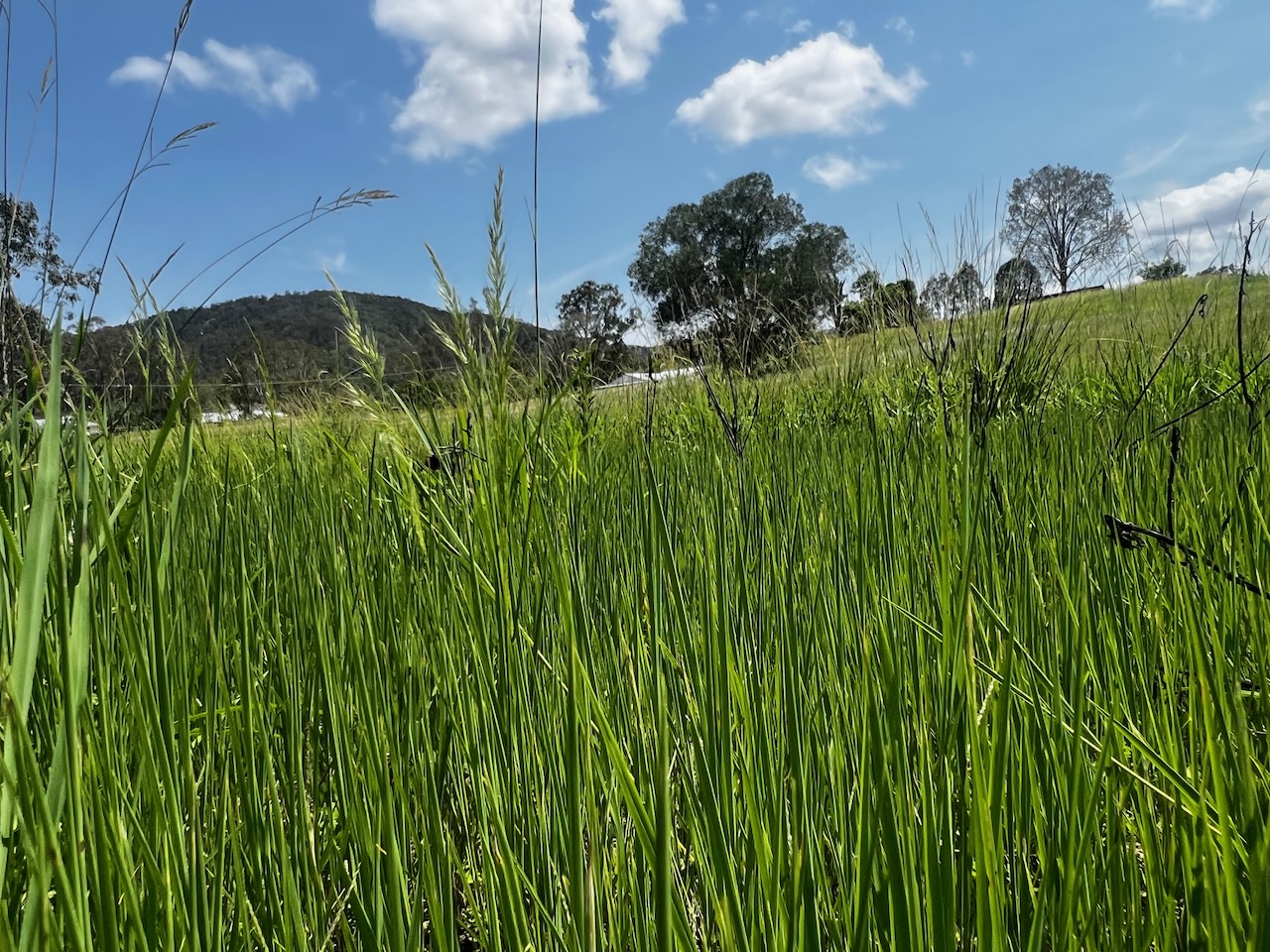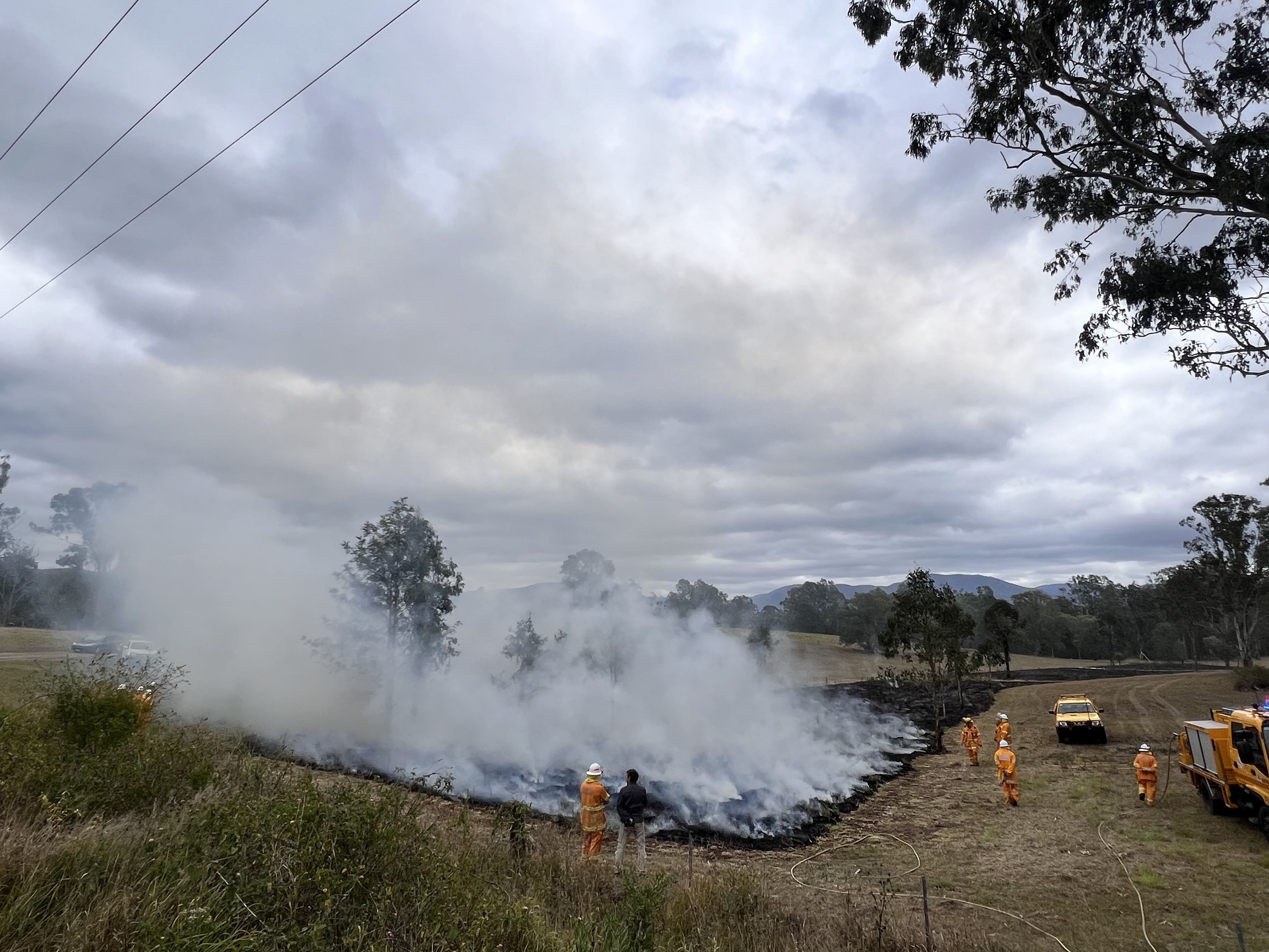Pre 2000’s the accepted narrative for establishing reforestation projects was preparation >plant>photo opp> move on. 3 year post reforestation maintenance programs is now the narrative in most projects depending on location.(Marcus Yates, 2024)
The following are notes I’ve made to track the plan for the regeneration process:
Suggested Planting date in active site approx. Thurs April 25th
Preparation
Slash the area 6 weeks prior to date of planting 21 March 2024
- Position site pegs across gully from east -west
- Spray 1m diameter circles around planning site with appropriate herbicide and emerging woody environmental weeds (Biactive – surfactant does not harm aquatic organisms) with the addition of Fulvic acid which increases biodegradability of the glyphosate molecule, increases soil carbon and reduces herbicide/water ration by 1/3) + a squirt of dishwashing liquid (breaks the surface tension of H2O thus increasing contact with the cuticle of leaves
- Spray again 1 week prior to planting. April 18th 2024

Planting
- Purchase selected spp from local nurseries. Ensures hardier stock grown from parent trees from the local provenance
- Sun “harden’ stock in full sun for 2 weeks prior to planting April 9th 2024
- Mechanical dig planting hole a day or two before planting date. April 23rd
- Must have adequate sub soil moisture on the day of the planting.Otherwise reschedule
- Saturate plants on the morning of the planting
- Group demonstration of the techniques used to eliminate/minimise transplant stress
- Place inoculated soil in planting hole
- Secure weed mat and tree guard. Tree guards create a micro climate of increased humidity and protects against the wind, reducing the plant losing moisture from transpiration (reduces transplant stress). Protects from herbicide overspray and animals grazing (wallabies and hares)

Maintenance
- Replant plant losses when suitable.
- 6 -10 week Spray routines around plants and neighbouring woody weeds (dependent on local weather conditions and seasons)
- Slash when required
- Brush cut inter rows (when required)
- Form prune to retain one leader when required (approx. 1st and 3rd month post planting)
- Remove tree guards when tree is 3 x height of guard
- Continued monitoring of natural regen
- Interplant where required
Relevant read:
https://ris.cdu.edu.au/ws/portalfiles/portal/72716695/Preece_et_al_2023_JEnvMgt.pdf

Planned Planting: Species Layout
EM – Emergent species
C – Canopy species
Sp.- Space for sub canopy species and shrubs (or natural regen) as part of stage 2 planting. Est > April 2026 or when canopy semi closes














